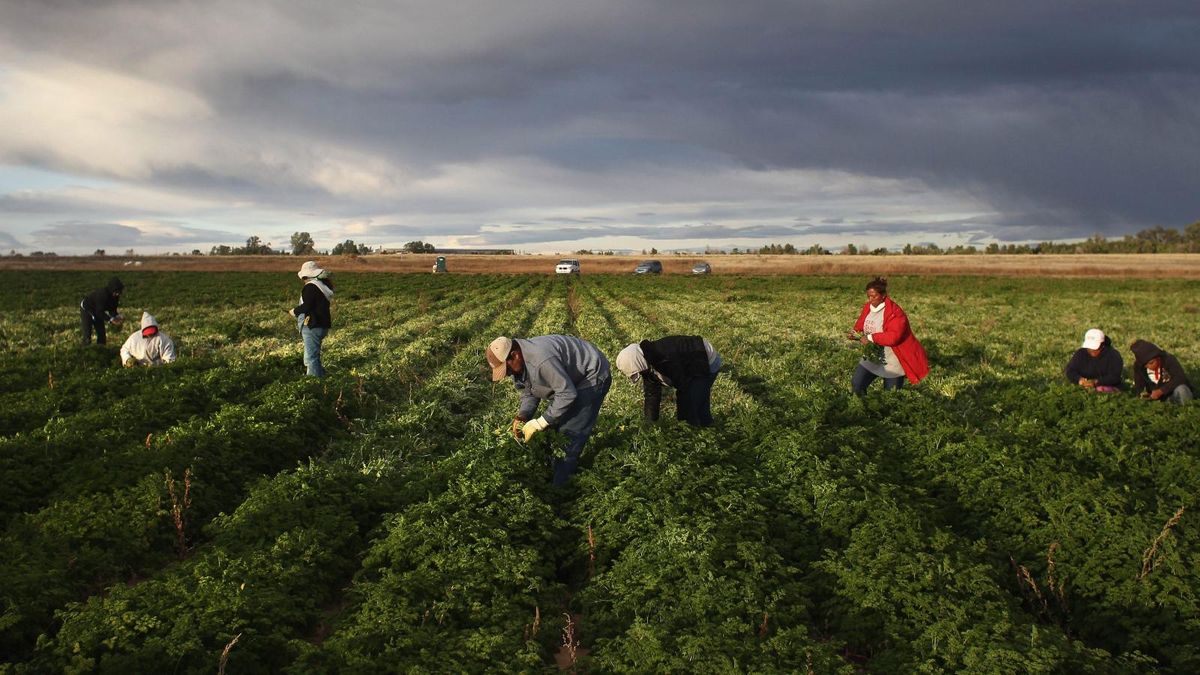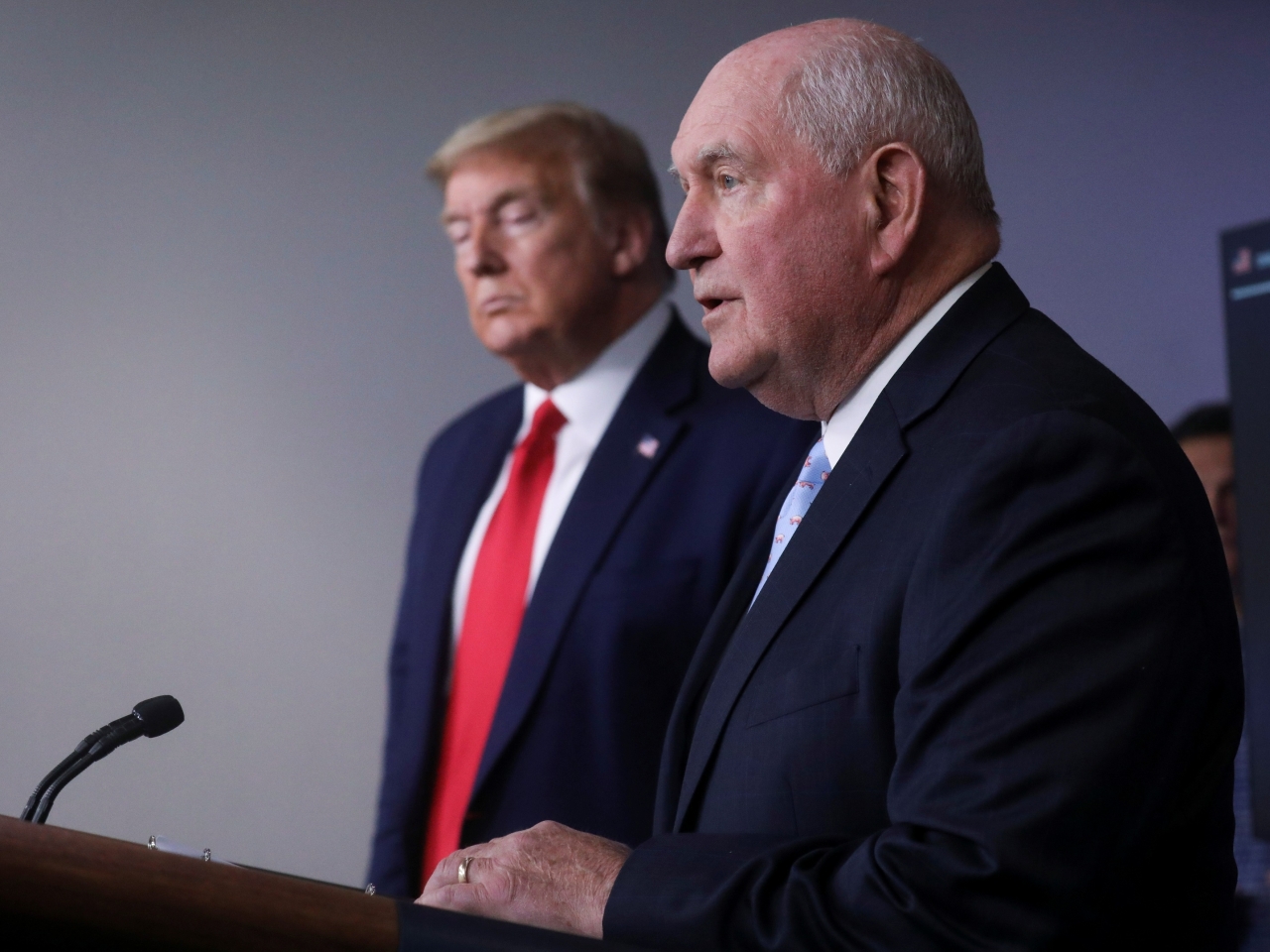US farmers are destroying crops due to reduced demand, stoking concerns of future food shortages

A few minutes every morning is all you need.
Stay up to date on the world's Headlines and Human Stories. It's fun, it's factual, it's fluff-free.
Farmers in the United States are having to make the difficult decision to destroy their own crops as demand drops nationally due to the COVID-19 crisis.
Though the US still has the ability to produce enough food for its citizens, some experts fear that the food supply chain’s inflexible infrastructure could lead to a food shortage in the commercial sector.
The US federal government has acted to create a multi-billion dollar aid program to assist farmers. This follows aid that President Trump’s administration has already been giving farmers as a result of a trade war with China.
Farmers face lack of demand
On Thursday, April 16, Reuters reported on yet another side effect of the COVID-19 pandemic: farmers destroying their own crops in response to a drop in demand.
With restaurants across the country closing or, at best, being reduced to delivery services, much of farmers’ agricultural supply is no longer needed.
Reuters interviewed a California farmer named Jack Vessey who reports that he’s already destroyed over a million dollars’ worth of food.
California is the country’s leading producer of fresh produce and Vessey says he and his crew have been pained to see so much food and effort go to waste.
For many farmers like him, the cost of paying for the labor necessary to harvest and then store crops has been too much. Vessey said he’s personally been forced to lay off 150 seasonal workers.
Meanwhile, restaurants all over the country are facing the possibility of having to close permanently as they lose business during statewide lockdowns.
Similarly, excess meat and milk have also been discarded, even as demand from grocery stories remains high.
One of the largest issues is a lack of the workers needed to process products, either due to being laid off or falling ill to the virus. In South Dakota, COVID-19 ravaged one of the US’s largest hog processing plants, cutting into the nation’s pork supply.
Is a food shortage possible?
Experts have said that food hoarding is unnecessary as a food shortage during the crisis is unlikely. Yet, grocery stores have experienced interruptions in their food chain supplies due to the crisis and the sight of empty shelves at grocery stores isn’t uncommon.
But if there is unmet demand at grocery stores, why are farmers destroying crops?
The answer can be found in the food supply infrastructure. The supply chains that provide food to restaurants, schools and hotels are not the same as those that serve grocery stores or food banks. There is no simple logistical way to merge the two types of food supply chains: commercial and consumer. On a national scale, it is exceedingly difficult to redirect food from one group to the other.
For that reason, American farmers, who mostly supply commercial customers, are experiencing a drop in the cost of their product. That loss of income has resulted in many farm workers being laid off.
In short, a reduction in food production now could result in higher food costs for the consumer down the line and food shortages for commercial enterprises when they return to business.
A federal response
To address the issue, the US government is stepping in to help farmers. The Trump administration has announced a US$19 billion farmer relief program, which includes US$16 billion worth of direct payments to farmers. The US Department of Agriculture will use the remaining US$3 billion to purchase goods for food banks and aid organizations.

The aid will be distributed monthly, with US$100 million worth of purchases of fresh produce, dairy and meat products.
This is yet another round of aid the Trump administration has given to US farmers. In 2019, the Department of Agriculture created a US$16 billion aid program that involved US$14.5 billion in direct payments to farmers.
This came after the US president initiated a trade war intended to force China to renegotiate trade deals between the two countries and abandon trade practices that had been perceived as unfair. In response to tariffs Trump put on their goods, China placed retaliatory tariffs on agricultural goods from the US, resulting in a major financial hit to US farmers.
Essential food workers
While US farmers struggle, their employees have been deemed “essential” during the crisis.
Like healthcare workers and grocery store staff, farm workers have been exempt from the strict stay-at-home orders implemented in states like California. Many of these critical workers are undocumented immigrants in the US.
However, as countries around the world work to curtail the entrance of migrant workers, who have historically provided cheap agriculture harvesting, there are concerns that a loss of workers will be another contributing factor of a future food crisis.
In Europe, the UK, Spain and Germany are among the countries struggling to find workers to harvest and package fresh produce.
Elsewhere, as international food supply chains face disruptions due to the pandemic, food prices are skyrocketing. Wheat and rice, two of the most important crops in the world, have both seen steep price increases, with the former rising 8% and the latter 25%.
[article_ad]
Have a tip or story? Get in touch with our reporters here!
Sign up for daily news briefs from The Millennial Source here!




Comments ()